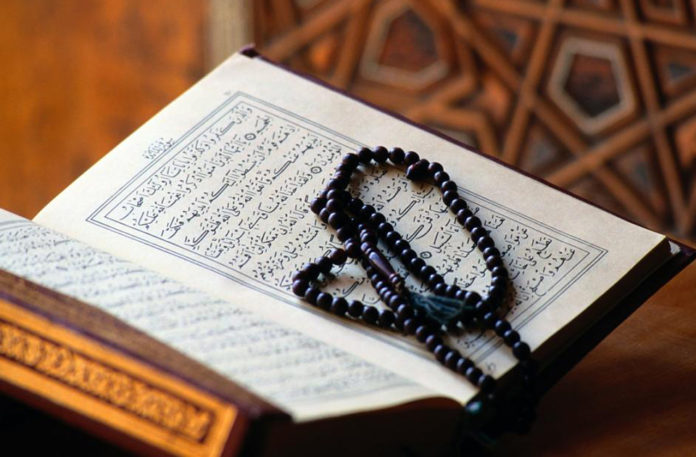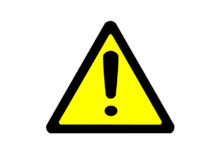KEY: (Q), ‘Alî al-Qârî, Sharh Shamâ’il (M) Munâwî, Sharh Shamâ’il (MS) Miscellaneous additions
§1/37 Muhammad bin Bashshâr narrated to us; Abû Dâwûd informed us; Hammân informed us; on the authority of Qatâdah who said,
| I asked Anas bin Mâlik, ‘Did the Messenger of Allâh ﷺ dye his hair?’ He replied, ‘He did not reach that stage, there was just something on his temples, however Abû Bakr dyed his hair with henna and katam.’[1] |
“I asked Anas bin Mâlik, ‘Did the Messenger of Allâh ﷺ dye his hair?’ He replied, ‘He did not reach that stage,” (Q) meaning his hair did not reach that stage, this is what some said but the correct opinion is that he ﷺ himself did not reach the stage in life where he required to dye. This explanation is strengthened by the report of Muslim via the route of Muhammad bin Sîrîn that he asked Anas bin Mâlik, ‘Did the Messenger of Allâh ﷺ dye his hair?’ He replied, ‘He did not reach that age.’ It is also possible that it means that the number of his white hairs did not reach the point where he would have needed to dye them, and this understanding is strengthened by the remainder of the hadîth. “There was just something,” (Q) insignificant “on his temples,” (Q) the literal sense of this seems to contradict the next hadîth, however it could be said that this statement was said to stress their lack of number as opposed to specifying the number of white hairs on his beard. al-`Isâm said, ‘One also understands from this that there were only a few white hairs on his head because the first appearance of white hairs there is on the temples.’
(MS) Bukhârî records on the authority of Wahb Abû Juhayfah as-Suwâ´î who said, ‘I saw the Prophet ﷺ and I saw some white hair below his lower lip.’; Harîz ibn `Uthmân asked `Abdullah ibn Busr, the Companion of the Prophet ﷺ, ‘Did you see the Prophet ﷺ when he was an old man?’ He replied, ‘There was some white hairs below his lower lip and above the chin.’;[2] He also records on the authority of Muhammad ibn Sîrîn who said, ‘I asked Anas if the Prophet ﷺ dyed his hair.’ He replied, ‘He did not reach the stage of having white hair, except a little.’; Thâbit reports that Anas was asked about the Prophet ﷺ dying his hair to which he replied, ‘He did not reach that stage where he would have needed to dye, and if I wished to count the scarce scattering of white hairs in his beard [I could have done so].’ Muslim records on the authority of Thâbit that Anas said, ‘If I had wished to count the scarce scattering of white hairs in his head, I could have done so.’; Jâbir ibn Samurah said, ‘White hairs appeared on the front of his head and beard.’
al-Hâfiz ibn Hajr said, ‘All the various ahâdîth concerning this are reconciled by the report of Muslim on the authority of Anas, ‘The Messenger of Allâh ﷺ did not dye his hair, there were white hairs on his lower lip, temples, and a scarce scattering on his head.’[3] From all the different narrations it becomes clear that most of his ﷺ white hairs were on his lower lip. The statement of Anas when asked if he ﷺ dyed his hair, ‘There was just something on his temples’ means that there were not that great a number such as would have required him to dye, this was explicitly stated by him in the version narrated by Muhammad ibn Sîrîn.’[4]
“However Abû Bakr dyed his hair with henna and katam,” (Q) The reason for mentioning Abû Bakr was because of his status and closeness to the Messenger of Allâh ﷺ. (M) Katam is a root that contains a reddish colour which is mixed with wasima so as to get a black dye. The narration of the author mentions Abû Bakr alone as does Muslim in some of his routes. However the narration of Ahmad has, ‘Abû Bakr and `Umar dyed their hair with henna and katam.’ Some said that the mention of `Umar here is an error due to the report of Muslim that Abû Bakr would dye his hair with henna and katam and `Umar would dye his hair with henna alone, (MS) or it indicates that Abû Bakr would use a mix all the time whereas `Umar would not,[6] or that `Umar employed one method sometimes and the other at others. This option is better than claiming error.[7] (Q) This narration shows that Abû Bakr would mix henna with katam when dying and not use katam alone, because this would imply that he dyed his hair black and that is something blameworthy. al-`Asqalânî said: using katam alone leads to a black colour with a reddish tinge, using henna alone leads to a red colour and mixing both leads to a colour between black and red. Detail follows in the next chapter.
§2/38 Ishâq bin Manûr and Yahyâ bin Mûsâ narrated to us; `Abdur-Razzâq narrated to us; on the authority of Ma`mar; on the authority of Thâbit; on the authority of Anas (RA) who said,
| I counted only fourteen white hairs in the head and beard of the Messenger of Allâh ﷺ.[8] |
“I counted only fourteen white hairs in the head and beard of the Messenger of Allâh ﷺ,” (Q) This does not negate the hadîth that has already been quoted in the first chapter also on the authority of Anas (RA), ‘There were not to be found [as much as] twenty white hairs on his head and beard,’[9] because this is a generic negation (M) and is an approximation, and fourteen is close to twenty. Bayhaqî records on the authority of Anas, ‘Allâh, Exalted is He, did not disfigure him with white hairs, there were only seventeen or eighteen such hairs,’ (MS) the isnâd is sahîh.[10] al-Hâfiz ibn Hajr said, ‘Meaning that his white hairs did not detract from his beauty in any way.’[11] (M) These two narrations are reconciled by stating that he was informing of two different stages in the life of the Prophet ﷺ or that he himself did not count more than fourteen hairs but in actuality there were seventeen or eighteen.
§3/39 Muhammad bin al-Muthannâ narrated to us; Abû Dâwûd informed us; Shu`bah informed us; on the authority of Simâk bin Harb who said that he heard Jâbir bin Samurah (RA) saying upon being asked about the Messenger of Allâh’s ﷺ white hairs,
| When he oiled his hair, no white hairs would be seen, but when he did not oil it, something of them would be seen.[12] |
“When he oiled his hair, no white hairs would be seen,” (Q) due to their being hidden by the shine of the oil, “but when he did not oil it, something of them would be seen,” (MS) Ahmad records on the authority of Jâbir bin Samurah that, ‘The hair on the front of the Messenger of Allâh’s ﷺ head and beard had turned white. When he oiled it and combed it, it was no longer apparent.’ Muslim records on the authority of Jâbir bin Samurah that, ‘The hair on the front of the Messenger of Allâh’s ﷺ head and beard had turned white. When he oiled it, it was no longer apparent, but when it was dishevelled, it was.’ (Q) This shows that when he ﷺ oiled his hair, it would join together and therefore the white hairs would be hidden due to their scarce number, but when he did not oil his hair, it would be loose and then the white hairs would show.
ENDNOTES
1. Bukhâri [Manâqib] and Muslim [Fadâ´il]
2. Zurqânî, Sharh Mawâhib al-Laduniyyah [5/496], ‘The clear sense of this hadîth shows that there were ten or less. This is because the jam` qilla has been employed which refers to a number which is ten or less.’
3. This was also stated by al-`Ainî, `Umadatu-l-Qârî [11/297]
4. Fath [6/707-709]
5. and one narration of Muslim.
6. `Adhîmabâdî, `Awn al-Ma`bùd [11/2590]
7. Sharh Mishkât [8/232 #4452]
8. Ahmad [#]
9. Hadîth #1
10. Fath [6/708]. Muslim also records on the authority of Anas, ‘Allâh did not disfigure him with white hairs.’ al-Hâkim records on the authority of `A´ishah, ‘Allâh did not disfigure him with white hairs.
11. Sharh Mawâhib al-Laduniyyah [5/497], Fath [6/709]. This was also stated by al-`Ainî, `Umdatu-l-Qârî [11/297]
12. Muslim [Fadâ´il] and an-Nasâ´î [az-Zînah]
(NOTE: If you want to build a strong and powerful relationship with Allah, check out Islamia TV, where you can watch Islamic speakers from across the globe deliver inspiring and motivational courses. Learn more at www.islamia.tv.)






















